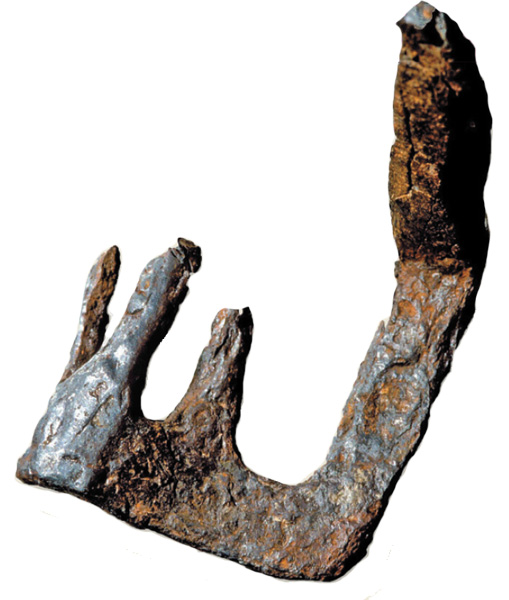
A. Persian garden tool
B. Arm from Canaanite statue
C. Hittite BBQ spit
D. Roman key
E. Egyptian hairpin
Answer: (D) Roman key
This oddly shaped and somewhat-contorted piece of iron dating to the late Roman period (70–330 A.D.) was once used to unlock the door to a building, probably a dwelling or storage area. The key likely opened a “tumbler” lock which was fitted to a large wooden bolt that secured the door. The lock consisted of several pins that would fall (or “tumble”) into place once the bolt had been moved into position. Only a key with the corresponding and correctly spaced number of notches could then be used to lift the tumblers out of the locked position and release the bolt.
Tumbler locks, which are still used to secure buildings in some rural parts of the Middle East, were used to secure everything from granaries to palaces. In Judges 3:23–26, after the Israelite hero Ehud had dispatched the Moabite king Eglon in the “throne room” of his own palace (he was using the toilet), Ehud was able to flee the scene undetected by locking the door to the palace’s upper quarters behind him. By the time Eglon’s royal guard had found the key to the lock and opened the doors to the king’s chambers, Ehud had fled the palace grounds.
Already a library member? Log in here.
Institution user? Log in with your IP address.

